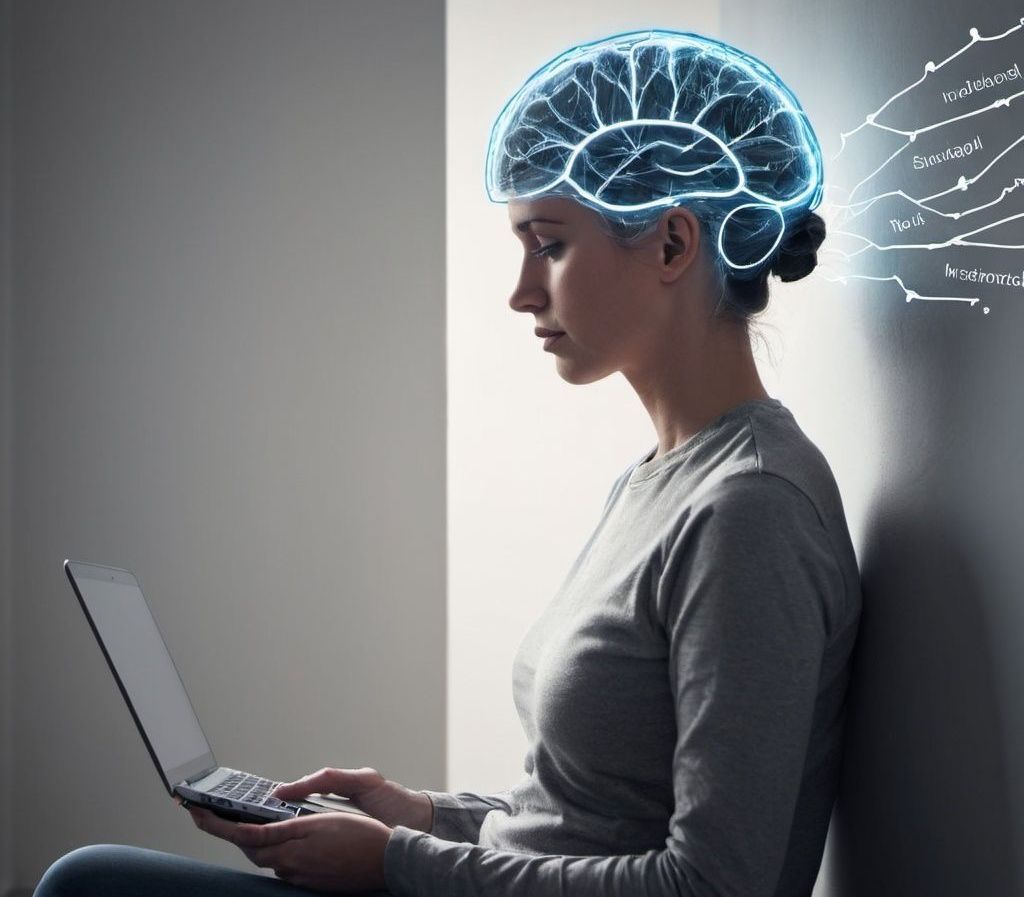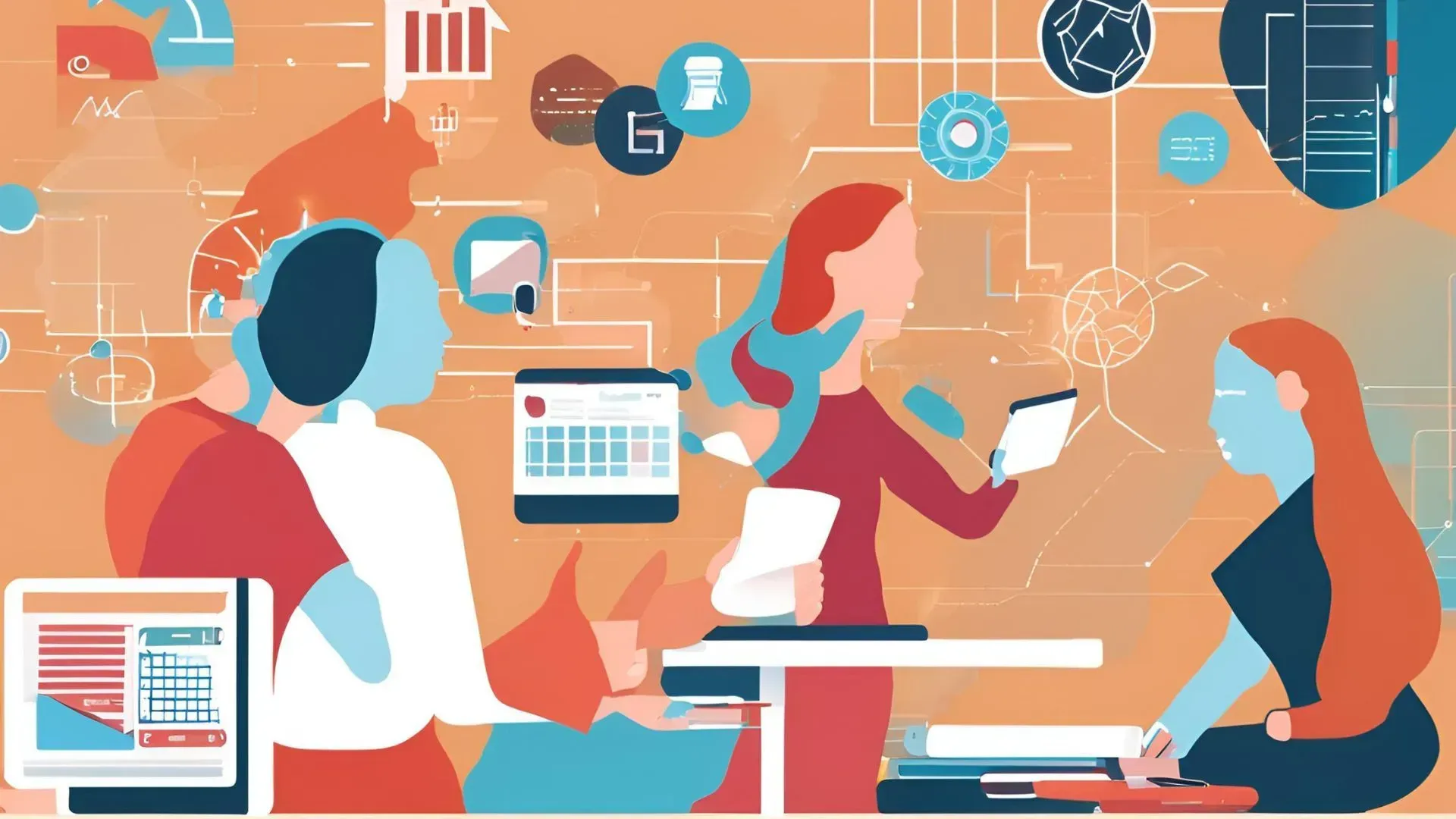
Technology is changing a lot about our lives and healthcare. It's also changing how we get help for our mental health. Now there are more online options like video counselling, wellness apps, and peer groups. We all know that technology increases access to care, but using it also creates issues that we need to address to help people safely.
Today, we will look at the positive role of technology in mental health, and challenges of using tech, and things we can improve.

The Positive Role of Technology in Mental Health
A wide variety of platforms now exist, ranging from basic symptom-tracking apps to AI-assisted treatments.
Teletherapy Services
Teletherapy lets you talk to a therapist through video or phone, so you can get help no matter where you are. It became really popular during COVID-19 because it's a safe way to have therapy without going in person.
Now, lots of therapists do teletherapy all the time, so it's more flexible for everyone.
Digital Therapeutics
Digital therapeutics are computer programs or apps that you can use by yourself or with your regular therapy to help with problems like feeling sad, worried, or having trouble sleeping.
You can include things like apps based on cognitive behavioural therapy, which help you learn new ways to think and act.
There are also apps for mindfulness, which can help you relax and feel less stressed. Some digital therapies even use special sensors you wear to track things like your heartbeat or muscle tension to give you feedback.
Peer Support Communities
Peer support communities are groups of people who are going through similar tough times, and they come together online on sites like Mental Health America and TalkSpace.
They share their experiences, and tips for dealing with things, and support each other. Being part of these groups can make you feel less alone and more understood when you're dealing with mental health issues.
Passive Data Collection
Passive data collection on your phone means it quietly gathers info about how you use your device, like how you type or move. Researchers use this data to learn about people's mental health without them actively doing anything.
Looking at lots of anonymous data together helps researchers understand mental illnesses better and possibly even find signs of them early on.

Challenges of Technological Integration
Technology's integration into mental health care brings promising opportunities but also introduces many challenges.
Reduced Human Interaction
In traditional therapy models, in-person contact plays a critical role in interpersonal interaction. However, this aspect is diminished in digital platforms, making it harder to establish non-verbal cues and empathy.
To address this challenge, carefully combining treatment models that combine virtual and in-person sessions may be necessary, particularly for severe mental illnesses.
Uncertain Long-Term Impacts
Extensive digital mental healthcare has improved accessibility, but its long-term impacts are not fully understood. While it helps, relying too much on screens for treatment might unintentionally worsen issues like social isolation, attention difficulties, and psychological dependence or addiction in some cases.
It's important to be careful and mindful to avoid creating new problems while addressing existing ones.
Lack of Standardisation
There's currently limited guidance and consensus regarding best practices, safety protocols, privacy standards, and scientific evidence of the effectiveness of many new digital mental health methods. Regulatory frameworks and industry-wide standards are still developing.
Access & Literacy Barriers
Not everyone has access to high-speed internet or devices, or the digital skills needed to use technology for mental health support. Groups like younger, older, lower-income, or rural populations may face more barriers. So, it's important to consider people's preferences too.
Privacy & Security Issues
As technologies gather increasingly personal mental health data, maintaining user privacy and ensuring data security pose ongoing technical and policy challenges.
It's necessary to strengthen protections to safeguard highly sensitive information shared with apps and platforms.
Changes to Treatment Models
Relying too heavily on technology for mental health care could alter the philosophical and clinical understanding of mental health issues if it replaces crucial in-person aspects rather than integrating them into a balanced treatment plan. This shift has significant clinical and human implications that require careful consideration.
Moving Forward with Care and Caution
As technology continues to improve mental healthcare, it's crucial to approach its implementation thoughtfully and based on evidence.
Regulations and Standards
Creating rules and guidelines for how digital mental health tools should work is important. These rules should focus on keeping people's information private and making sure the tools are helpful and safe to use.
We need to base these rules on ongoing research to understand how well the tools work and if they might have any bad effects.
It's also important to advise on how to use these tools alongside traditional care and make sure that people who work in mental health know how to use them properly.
Prioritise Solutions
It's really important to focus on creating and studying treatment approaches that mix technology with human-centred care.
Combining telehealth, apps, peer support, and traditional counselling is about giving each person the help they need.
Just relying on digital tools for everyone might not work well or could even be harmful. Making treatment personalised is the most important thing.
Inclusivity
We need to work on fixing problems that make it hard for some people to get mental health help, like how much it costs, not having internet or devices, and not knowing much about digital health.
This way, everyone, including marginalised groups, can get the help they need. Listening to what users need and want can help solve these problems.
People should also be able to choose the type of help they want based on what works best for them and their situation.
Consider Broader Impacts
We need to carefully look at how using technology for mental health care might change communities and relationships in the long run.
It is very important to research and talk to people to see what might happen. If there are unexpected problems, we should talk about them to make things better.
Final Words
Technology shows great potential for advancing mental healthcare accessibility if challenges are addressed properly. With research and standards, its benefits can be maximised while avoiding unintended issues. Most importantly, an approach combining technology, human expertise, and different treatment modalities based on each person's needs will likely lead to the best outcomes overall. Continued responsible progress is key.
Sources:
- https://digitalsalutem.com/technology-in-mental-health-treatments
- https://www.nuffieldbioethics.org/assets/pdfs/The-role-of-technology-in-mental-healthcare.pdf
- https://www.nimh.nih.gov/health/topics/technology-and-the-future-of-mental-health-treatment
- https://citizenadvocates.net/blog/the-impact-of-technology-on-mental-health-balancing-connection-and-screen-time/
- https://www.nuffieldbioethics.org/publications/technology-in-mental-healthcare
Be informed. Stay updated.
Stay ahead with the
HermesHerald newsletter!
Immerse yourself in exclusive insights and crucial updates. Ensure you're always in the know!
Contact Us
Thank you for signing up to HermesHerald! We're excited to keep you updated with the latest insights and information. Stay tuned! 🌟
Please try again later.
Contact Us
Thank you for signing up to HermesHerald! We're excited to keep you updated with the latest insights and information. Stay tuned! 🌟
Please try again later.
Contact Us
Thank you for signing up to HermesHerald! We're excited to keep you updated with the latest insights and information. Stay tuned! 🌟
Please try again later.
With over 40 years combined experience, we conduct professional investigation and intelligence services for local and international clients in the public, private, and law enforcement sectors.
Website Privacy Policy & GDPR | Operational Policy
BROWSE WEBSITE
CONTACT INFO
Phone:
1800 889 713
Email: help@cyberlutions.com.au
Location:
Suite 88, 30 Denison St, Bondi Junction NSW 2022
Location:
Unit 4, 95 Main Rd, George Town TAS 7253
BUSINESS HOURS
- Mon - Fri
- -
- Sat - Sun
- Closed
With over 40 years combined experience, we conduct professional investigation and intelligence services for local and international clients in the public, private, and law enforcement sectors.
BROWSE WEBSITE
CONTACT INFO
Phone: 1800 889 713
Email: help@cyberlutions.com.au
Location: Suite 88, 30 Denison St, Bondi Junction NSW 2022
Location: Unit 4, 95 Main Rd, George Town TAS 7253
BUSINESS HOURS
- Mon - Fri
- -
- Sat - Sun
- Closed
Copyright CYBERLUTIONS, All Rights Reserved
Content, including images, displayed on this website is protected by copyright laws. Downloading, republication, retransmission or reproduction of content on this website is strictly prohibited. Website Privacy Policy & GDPR | Operational Policy | Cookie Policy








